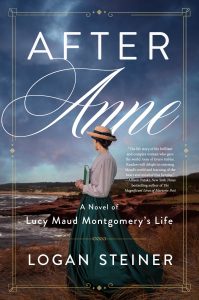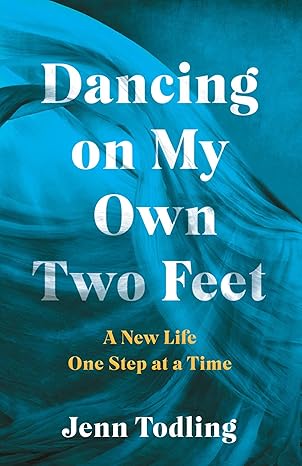What We Remember: Telling Lucy Maud Montgomery’s Story
What We Remember: Telling Lucy Maud Montgomery’s Story (Logan Steiner)
 At the end of my life, reflecting on my life experiences, what will my memory hold onto? I find that asking myself this question provides a dose of instant perspective—a way to sift the worries that matter out from a mental sandbox full of the everyday variety.
At the end of my life, reflecting on my life experiences, what will my memory hold onto? I find that asking myself this question provides a dose of instant perspective—a way to sift the worries that matter out from a mental sandbox full of the everyday variety.
I find this question so revealing that I structured my first novel around it. In After Anne, a novel based on the life of Anne of Green Gables author Lucy Maud Montgomery (who went by Maud), I decided which parts of the complex constellation of Maud’s life to tell based on what I thought might have stayed with her at the end of her life. We know Maud held bonfires burning papers in the months before she died. I found myself asking: Which papers did she chose to burn and why? And in those moments, which parts of her life would have played like a tape on repeat in her mind?
Our memories are not time-stamped. Neurons build bridges that connect our decisions from one day to a feeling years later. Memories of days past or of relationships we have lost can remain as salient as our most recent experiences. And we recall by flipping through the pages of life out of order. Maud did this literally when she sifted through journal pages and other papers at the end of her life, deciding what to keep and what to release into the flames. And so I told Maud’s story non-linearly, as she might have remembered and revisited it near the end of her life.
Looking back on a life with the perspective of time, it may be the personal tragedies that stand out most of all. They are what we all most dread, and they are the chisels that carve us. They are where many of memory’s bridges begin.
For me, some of my most painful memories are the ones that changed my life. I lost my younger brother Ben suddenly in 2014. At the time, I was caught up with the day-to-day efforts of my corporate law job, talking about writing novels one day. I walked out of a yoga class on a November evening, picked up my phone to listen to a message, and my life and perspective changed. Ben had started having seizures, and soon after that he was on life support. We had no time to say goodbye. I felt the particular rage and pain of a death out of order—my childhood playmate with whom I spent day after day at a Fisher Price craft table, making things together.
Losing Ben was the worst pain I’ve felt. But with unexpected life events come the raw, pounding realizations that move us to change as well. No one can count on a long life, as much as we like to. The summer after losing Ben, I decided to stop talking about writing and to start writing. My husband David and I, who were not planning on having kids, decided to freeze embryos, one of which became our daughter six years later.
Maud experienced the tragedy of a loss out of order when her closest friend and cousin Frede—nine years her junior—died of the Spanish flu in her prime. How this loss shaped Maud is a question the book explores in layers. So too with untimely losses of both of Maud’s parents, and the mental illness of some of those closest to her.
We are all one personal tragedy away from being a different version of ourselves. We could wake up tomorrow, and the world could look entirely different. In the dark days after losing Ben, all I could feel about this was a deep sense of unfairness. In learning about Maud’s life and the repeated blows she suffered, I spent days mired in the same sentiment.
But when I put myself in Maud’s shoes at the end of her life, things started to look different. I could see how the depth of her writing and her person could not be separated from what she’d been through. As Elisabeth Kubler-Ross wrote, “Beautiful people do not just happen.” I also saw how Maud could reexperience the people she’d loved as they played in her memory well after they were gone. I returned throughout the novel to a favorite time Maud and Frede may have had together, tracing the connections between that time and what was yet to come.
Maud is a woman who became different versions of herself in a single lifetime. She faced her fair share of tragedy. But her life was far from a portrait of sorrow and gloom. Through all that life dealt her, she continued to feel deeply and capture her insights in a tremendous body of work, including 20 novels, hundreds of short stories and poems, and—posthumously—a set of illuminating journals. The years I spent immersed in Maud’s story gave me tremendous respect for her strength of character, which was chiseled, as many of ours are, from life’s hardest edges.
—
Logan Steiner is a lawyer by day and a writer by baby bedtime. Her writing explores motherhood and the creative life—two things she once thought could never happily coexist. Logan also writes a Substack newsletter called The Motherhood Question. After graduating from Pomona College and Harvard Law School, Logan clerked for three federal judges, spent six years in Big Law, and served for three years as an Assistant United States Attorney. She now specializes in brief writing at a boutique law firm. Logan lives in Denver with her husband, daughter, and the cranky old man of the house, a Russian Blue cat named Taggart. Her debut novel After Anne is out now.
To learn more please visit www.logansteiner.com
AFTER ANNE
 As a young woman, Maud had dreams bigger than the whole of Prince Edward Island. Her exuberant spirit had always drawn frowns from her grandmother and their neighbors, but she knew she was meant to create, to capture and share the way she saw the world. And the young girl in Maud’s mind became more and more persistent: Here is my story, she said. Here is how my name should be spelled—Anne with an “e.”
As a young woman, Maud had dreams bigger than the whole of Prince Edward Island. Her exuberant spirit had always drawn frowns from her grandmother and their neighbors, but she knew she was meant to create, to capture and share the way she saw the world. And the young girl in Maud’s mind became more and more persistent: Here is my story, she said. Here is how my name should be spelled—Anne with an “e.”
But the day Maud writes the first lines of Anne of Green Gables, she gets a visit from the handsome new minister in town, and soon faces a decision: forge her own path as a spinster authoress, or live as a rural minister’s wife, an existence she once called “a synonym for respectable slavery.” The choice she makes alters the course of her life.
With a husband whose religious mania threatens their health and happiness at every turn, the secret darkness that Maud herself holds inside threatens to break through the persona she shows to the world, driving an ever-widening wedge between her public face and private self, and putting her on a path towards a heartbreaking end.
Beautiful and moving, After Anne reveals Maud’s hidden personal challenges while celebrating what was timeless about her life and art—the importance of tenacity and the peaceful refuge found in imagination.
BUY HERE
Category: On Writing





























I enjoyed this so much. Thank you.
What a deep and thoughtful interview. Thank you!